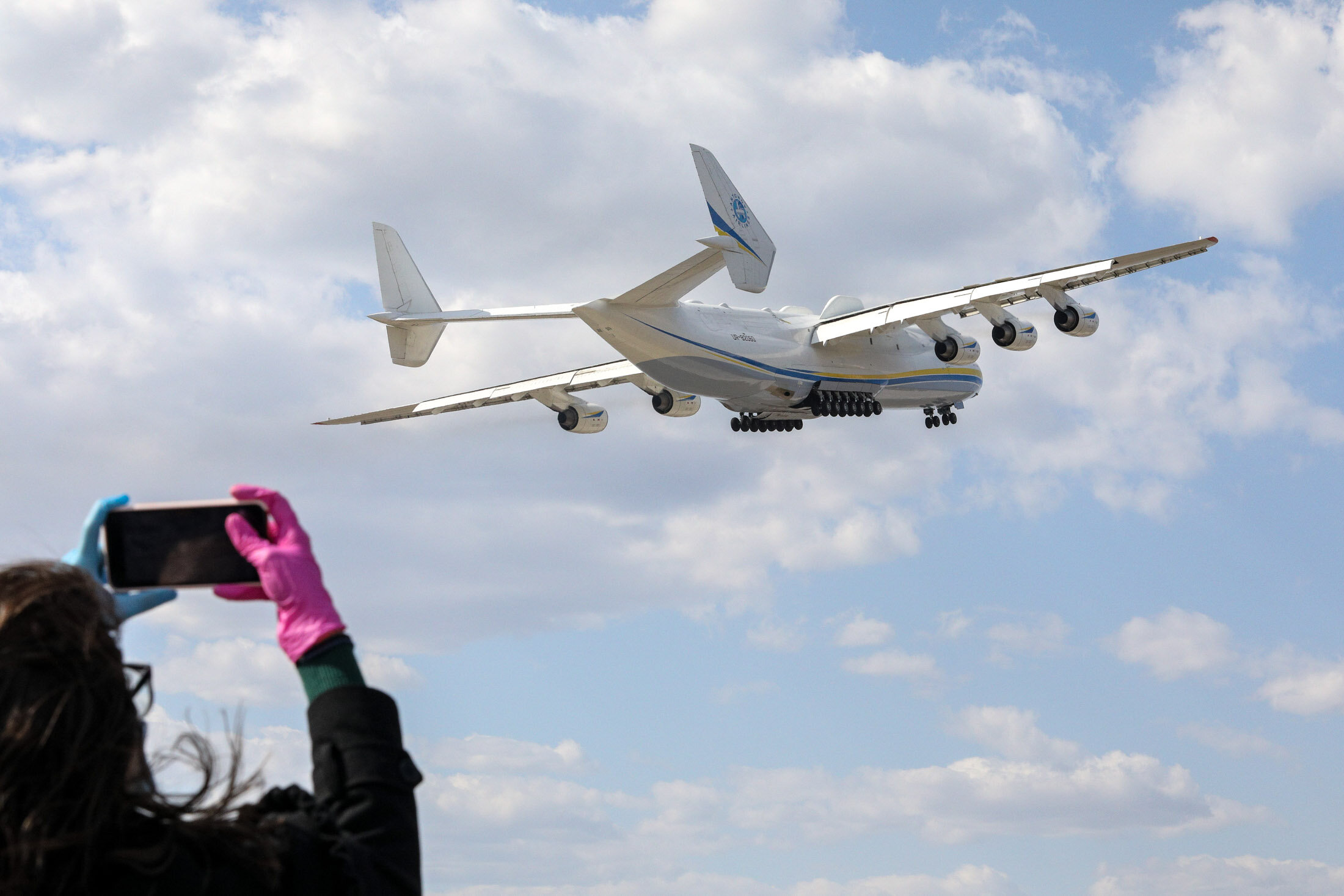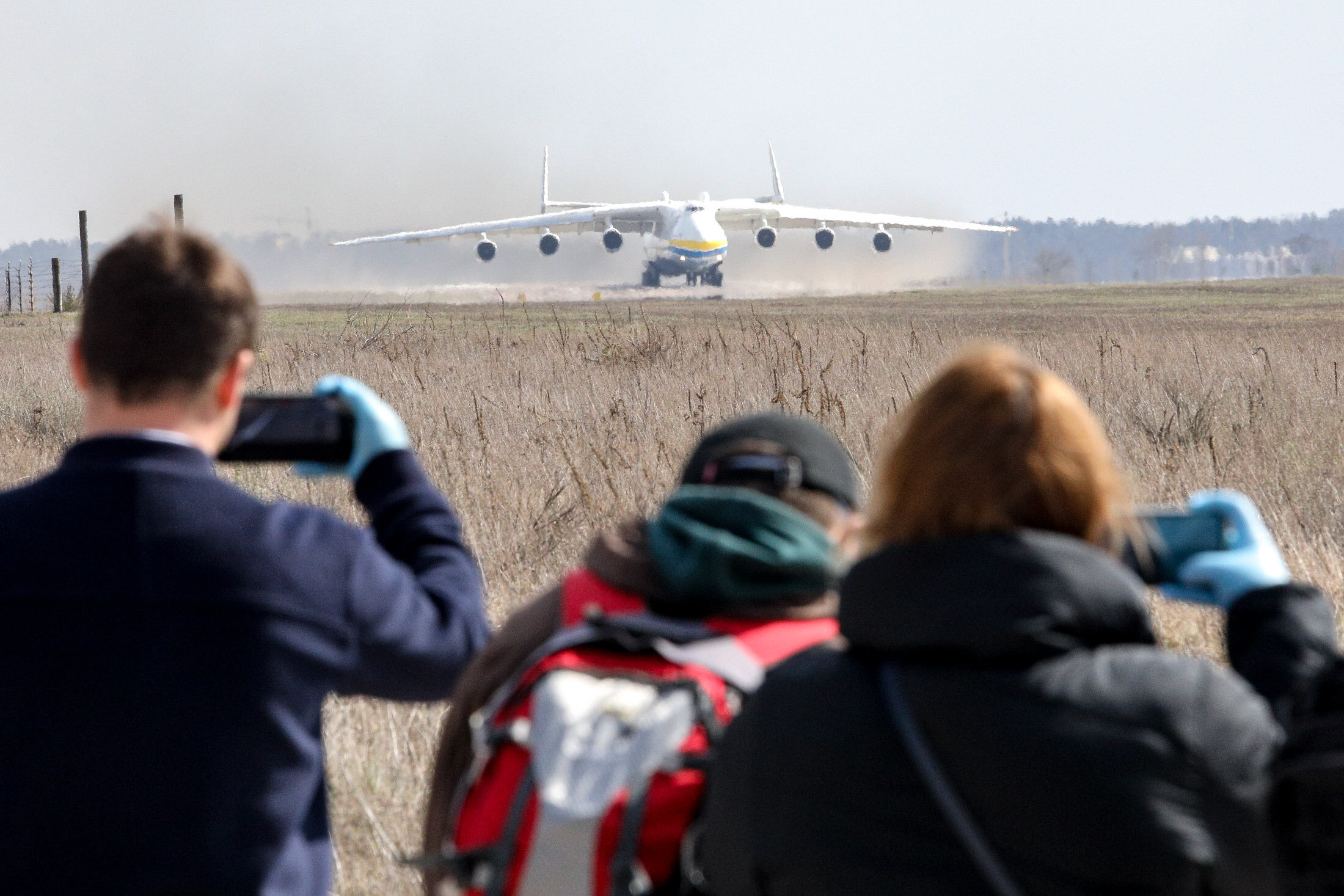Ukraine’s Antonov aircraft manufacturer is famous for its An-225 Mriya, the world’s largest and heaviest cargo jet. However, it also has a second, unfinished Mriya.
But don’t expect to see that giant plane conquer the skies anytime soon. Finishing the second Mriya’s construction is economically unviable, according to Oleksandr Donets, head of the Kyiv-based Antonov Company.
“(The unfinished aircraft) needs to be redesigned completely,” Donets said on April 23 while welcoming the existing Mriya’s arrival at the Hostomel airfield outside Kyiv with a load of medical equipment intended to help Ukraine fight the COVID-19 pandemic.
Moreover, the current Mriya already has limited use, as it is simply too big and too expensive for many freight transport jobs, Donets added.
Changing purpose
The first An-225 Mriya was built in 1988. Its intended purpose was to transport space launch vehicles and their components for the Soviet space program. The plane gained fame for carrying the Buran, the late-Soviet version of the space shuttle, on its back.
The Mriya program envisaged building two superheavy aircraft. However, construction of the second Mriya was halted in 1994 due to a lack of funding. The project was briefly revived in 2009, but, currently, the aircraft is only 70% complete.
Over the years, the Antonov Company has asserted its readiness to finish construction should it receive massive investment. In 2016, the Airspace Industry Corporation of China was allegedly ready to participate in the project, but later reportedly lost interest due to the extremely high cost.
The first and the only functional Mriya is used by Antonov Airlines, the Ukrainian aircraft manufacturer’s air transportation carrier, for commercial freight.
Now, according to Donets, completing the second aircraft makes sense only for Mriya’s initial intended purpose: air launching spaceships and transporting spaceship components.
“According to estimates made in 2012, when our relations with (Russia) were good, (the costs of construction) has reached nearly $460 million for the old specifications it was built with,” Donets said.
Were the plane to be redesigned with more modern components, the price would be even higher, he added.
At the same time, Mriya’s popularity for transportation is limited. The Antonov An-124 Ruslan aircraft, an earlier family of jets designed specifically for cargo transportation, are much more popular among Antonov’s clients.
“(Mriya) is not contracted as often as the Ruslans,” Donets said, “because (Mriya) was designed specifically for transporting Burans, not humanitarian cargo. Basically, for space. This was something the Soviet Union could afford. Most importantly, nearly 35 percent of (the world’s) airports can’t provide landing space (for Mriya). Because of its dimensions and wingspan, it doesn’t fit runway strips… We will not recoup the costs.”
COVID-19 mission
To this day, the An-225 Mriya remains the heaviest aircraft ever built, with the largest wingspan of any cargo jet operated across the globe.
According to its mother company, the giant aircraft normally has nearly 20 flights a year, and contracting it costs at least $1 million. The plane has set nearly 250 world records in civilian cargo transportation, including an unbeaten record for carrying an unprecedented 253.8 tons of cargo in the air.
On April 11, Mriya returned to the sky after nearly 2 years spent on the ground undergoing repairs and modernization work. It was contracted by Poland to transport 400 tons of medical supplies from China as part of the country’s battle against COVID-19.
Mriya’s expected visit to Poland generated an uproar among aviation fans. The Warsaw airport had to issue a statement urging Poles to refrain from coming to see the aircraft in person to prevent the spread of COVID-19.
As many as 80,000 people watched Mriya arrive in Warsaw via the airport’s online broadcast.
On April 23, the aircraft arrived at its home airfield of Hostomel in Ukraine, carrying nearly 100 tons of medical gear for the Ukrainian anti-pandemic effort. It was welcomed on the ground by the country’s top officials, including President Volodymyr Zelensky.
Just a few days later, on April 27, the giant aircraft completed yet another mission of transporting medical cargo to Leipzig Airport in Germany, as part of the Bundeswehr’s program of acquiring 25 million face masks.
Germany’s defense minister, Annegret Kramp-Karrenbauer, welcomed the plane’s arrival in person.
Ich bin stolz und dankbar, dass die #Bundeswehr hilft. Sie bringt mit ihrem strategischen Lufttransport insgesamt 25 Millionen dringend benötigter Masken nach Deutschland. #FuerEuchGemeinsamStark pic.twitter.com/EJsGuYydOb
— A. Kramp-Karrenbauer (@akk) April 27, 2020
You can also highlight the text and press Ctrl + Enter










